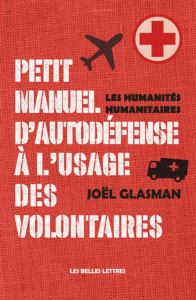Martín Caparrós •

A book by Martín Caparrós
Translated from Spanish (Argentina) by Alexandra Carrasco Buchet/Chastel
781 pages | 2015
“Each day around the world 25,000 men, women and children die of hunger or malnutrition. Never in the entire history of humanity has any plague, epidemic or war taken such a toll. And yet there is no lack of food: our planet is groaning under the weight of its overproduction and trade continues apace. How can this paradox be investigated and presented without degenerating into a mere list of statistics? This is the question Martin Caparrós tries to answer by meeting the hungry, but also the rich, squandering resources through over-eating. Their stories are here, told with perceptiveness and empathy by the author. Tirelessly delving into the mechanics of a system that deprives some people of this vital procedure, eating, while others die of consuming with excess, this book gives a thoughtful insight into world hunger and its related issues, from Niger to Bangladesh, from the Sudan to Madagascar, from the USA to Argentina, from India to Spain. An uncompromising and essential overview of the situation.”
Humanitarian Alternatives — What was it in your career and your mindset, as an author and journalist that led you to write such a detailed and ambitious book on the issue of hunger?
Martín Caparrós — I have spent nearly 30 years working on social topics. I have reported from all around the world on the problems of war and migration. And I saw that, in general, behind all these problems there was one constant factor: people who did not have enough to eat. For a long time I wasn’t sure how I would be able to tackle this subject, often seen as a cliché, about which we think we know everything when really we don’t want to know too much about it. The trigger was when I read somewhere that we are now able to feed all the inhabitants of the world, following a long period when this was not the case. This means that hunger today is not a technical problem of production, but a political, economic and social issue. So I said to myself that I should go about it as I usually do for this kind of job, that is to say go and listen to the people concerned. Generally, when talking of hunger, we talk in figures, we show the same pictures, so much so that we end up by making the whole topic abstract. Then on the basis of this abstract construction, we think we know all there is to know. But I told myself one simple thing: hunger does not exist. What does exist is a situation in which millions of people do not eat and I wanted to listen to their stories, at least some of them, by going to where they live, or struggle to survive, to try to understand through their experience, the different mechanisms and structures of hunger. This took me four or five years.
H.A. — In your book, a sentence particularly struck me: “I always thought I would start this book with an unvarnished, harrowing, ferocious account of a famine. I would turn up with an emergency aid convoy in some grim country, probably in Africa, where thousands of people were dying of hunger.” And, then a little further on you say, “I had thought everything through and planned it perfectly, but during the years I spent working on this book, no devastating famine occurred, just the usual routine hunger.” This immediately made me think of Victor Segalen’s book “Équipée”, in which he imagines the city of Chengdu in south west China before going there, wondering if what we imagine is strengthened or weakened by contact with reality. I asked myself the same question about your book: what did you imagine about hunger before writing this book and what did you find out?
M. C. — As for many of us, hunger for me was those images I saw as a child, the children of Biafra, with their swollen stomachs, and so on. So I pictured myself arriving in a place where people would be lying around starving, like on some strange battlefield. But I quickly learnt that this is no longer the case, that these days famines are more or less under control. But this just means that hunger today is much more difficult to show. Because we no longer have, or have fewer of these disturbing pictures, hunger has become much more muffled, hidden. We must dig deeper to be able to reveal what is happening. We should be aware for example that approximately one and a half billion people are on the sidelines of the global system. Decades of technical and social change have marginalised these populations who can be found on the outskirts of major cities, and it is here among these groups that most of the hungry can be found. This highlights the failure of a system which is not capable of integrating this workforce, the resource that these people represent.
H. A. — So you met people suffering from hunger. How did it feel, as a journalist, as someone who is plainly well nourished, to talk to someone in such a situation?
M. C. — I was always rather worried, but it depended a lot on the way the person I was talking to saw their own situation. However, there is something that moderates the imbalance a little, that is that most of the people sensed I was there to listen to them, something that did not often happen to them. For my part, I was particularly touched and grateful that they had accepted. This gave rise to what were often very intense exchanges. I am reminded in particular of Fatema, a Bangladeshi woman who worked in a textile factory in Dhaka, to pay the house and feed her children. She told me about her difficult life, the ten or twelve hours she spent each day at her machine, but she said that even so she liked working in the factory because she could talk to other women. When I asked what bothered her most about her work, she said it was thinking all the time about her husband who had left her alone to cope with the children. And when I asked her if she would like him to come back, having just been calling him by all the names under the sun a few minutes earlier, she blushed and then admitted shyly that yes, she would like him to. Suddenly, this strong, working woman, fighting for her children, showed she was fragile.
H. A. — Without mentioning her hunger, though, as you say, with what she had left, it was “at best, rice twice a day”. And you go on to say, “We generally think of hunger as a problem that affects people who have no work, the marginalised, the bereft, not those who spend half their lives in front of a machine, producing valued goods.” This story is interesting because it goes beyond the usual clichés about hunger. You’re talking about a woman who is working, albeit in the very difficult conditions that we know exist in the textile industry in Bangladesh, but who is to a certain extent ‘integrated’ in the system.
M. C. — I chose each of the countries I went to because they enabled me to illustrate the different mechanisms of hunger. Bangladesh allowed me to show how hunger is still used by certain bosses as a means of control. The fact that all these women like Fatema accept to work for twelve hours a day, six days a week, for a salary of 3,000 takas (35 euros) a month, can only be explained by hunger, but even with her job, she still does not have enough to eat, and if she didn’t work, she would die. This way of using hunger as an instrument is not just a side effect of local policies or the global economy, it is also a weapon used by some employers to further increase their profits.
H. A. — For this book, you had cause, I think, to meet with some NGOs. What conclusions do you draw from these meetings, both on the issue of malnutrition, and more generally on their work?
M. C. — Yes, I worked a lot with NGOs, in particular Médecins Sans Frontières [Doctors without Borders]. When I first thought of writing the book, I made contact straight away with some members of MSF whom I already knew. Their help was invaluable because, for four or five of the countries I went to for this book, I was able to go to their missions. They allowed me to meet up with people whom I was then able to interview. And as I also shared their accommodation, I was able to experience the life of humanitarian workers on a day-to-day basis. On the one hand, I respect their commitment to “saving lives”, as they repeat dozens of times a day. It is a beautiful, “fulfilling” feeling. On the other hand, I have my doubts, as I know they do also, about the fact that it is not a long-term solution and something should be done about the causes. They know that they often do not have the opportunity to do this, and so they have to be satisfied with acting on the consequences. And this they do with some efficiency.
H.A. — This sends us back to the age-old argument over whether NGOs are the last bastion, fending off disaster, doing what they can but unable to tackle the causes, or whether, to some extent they have not been led in spite of themselves to support an unjust system.
M. C. — At any rate, I do not believe in the old Trotskyist tenet according to which, by in some way letting the worst happen, we obtain the best. It is certainly not by leaving thousands of people to die that we will solve the problem of world hunger. More generally, it does not seem to me that rebellions on whatever scale occur at the worst time, when the situation is desperate. They arise when the minimum is available so people are able to think not just about what they will eat that evening, but about how they will eat in the years to come, when they still have the capacity to project themselves in the future and to rally together. The problem is to know whether the NGOs are simply applying bandages to stop the bleeding, or if they are helping people to reach this minimum level without which no revolt, no change is possible.
Interview by Boris Martin, chief editor
Translated from the French by Faye Guerry
To read the article in PDF click here.


